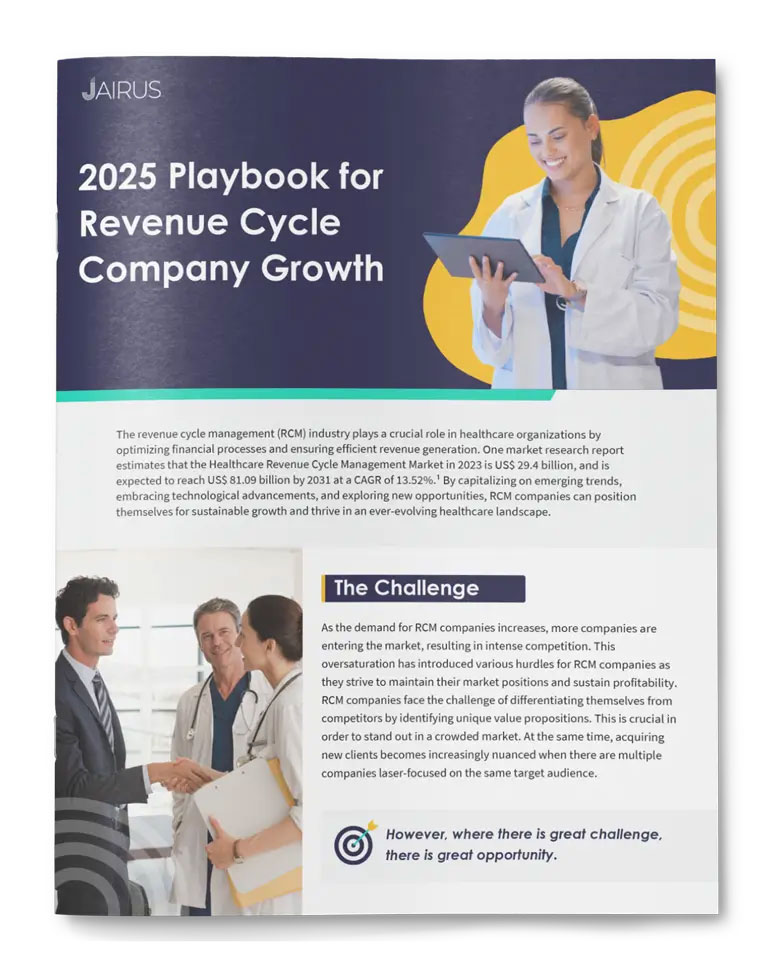Over the past two years, my company, Jairus Marketing, has worked with dozens of medical device, healthcare IT, and medical service companies in this new era of business. There are three things that separate the companies that are succeeding from those that are struggling. These three characteristics will help your MedTech company take flight and keep it soaring.
1. Mindset
Companies that are waiting for things to go back to how they were are faring substantially worse than those that have embraced this new environment as something to explore and thrive in. We are in a period of testing and learning – so much has changed, and the winners are those who are trying to build relationships through new channels, educate prospects in new ways, and deepen penetration in existing accounts with new approaches.
2. Metrics
There are several critical metrics companies should measure to understand the health of the pipeline. While the specifics may vary slightly, there are a few that are universal:
Share of Wallet
How much of a current account’s business is being captured by the company?
Lead to Customer Efficiency
This is a simple measure but an extremely valuable insight into the effectiveness of the company’s sales and marketing engine. To calculate this, divide the number of new customers by the number of leads generated over a set period of time. It is a lagging indicator since the sales cycle takes time, but it is extremely valuable to understand the investment made into the front end of the business. A leadership team can look at this metric by salesperson to understand differences in selling skills or by product line to determine which are most ripe for growth. They can also look at this as a measure of marketing efficacy by channel – which efforts develop into customers versus just wasting money. The insights are endless.
Length of Sales Cycle (by Step)
I find that most companies have a vague sense of their sales cycle but are frequently wrong about how long each step takes to complete. By tracking new opportunities across the various steps of the sales process, bottlenecks and gaps become very clear, very quickly.
Cost per Lead
This is a commonly measured metric and a good one as it relates to marketing investment. The actual number isn’t a full enough story, though. To use this metric, it’s critical to view it in the context of close rate. To illustrate the point, if the lifetime value of a new customer is $100,000 and 10% of leads become customers, a cost per lead of $150 versus $200 is irrelevant. Instead, the company should invest as much as they can into generating new leads, even if the cost per lead doubles or triples.
3. Marketing
Historically, the only person with insight into prospect engagement was the sales professional. Marketing’s job was to make brochures for the sales team. As we’ve been forced online, we can now leverage tools to see what a prospect is doing over time without having to rely on manual reporting. Companies who see an investment in marketing (most notably, digital) as worthwhile are seeing substantial ROI from those investments. To make marketing work, it’s important to target correctly with a value proposition that the prospect cares about. Additionally, it’s critical to store information on prospect engagement in the CRM or a marketing automation system. This sets the company up for long-term growth with its prospects.
Over the next five years, we are going to see continued upheaval in the industry. By aligning to these three factors, you can prepare yourself and your organization to win.


